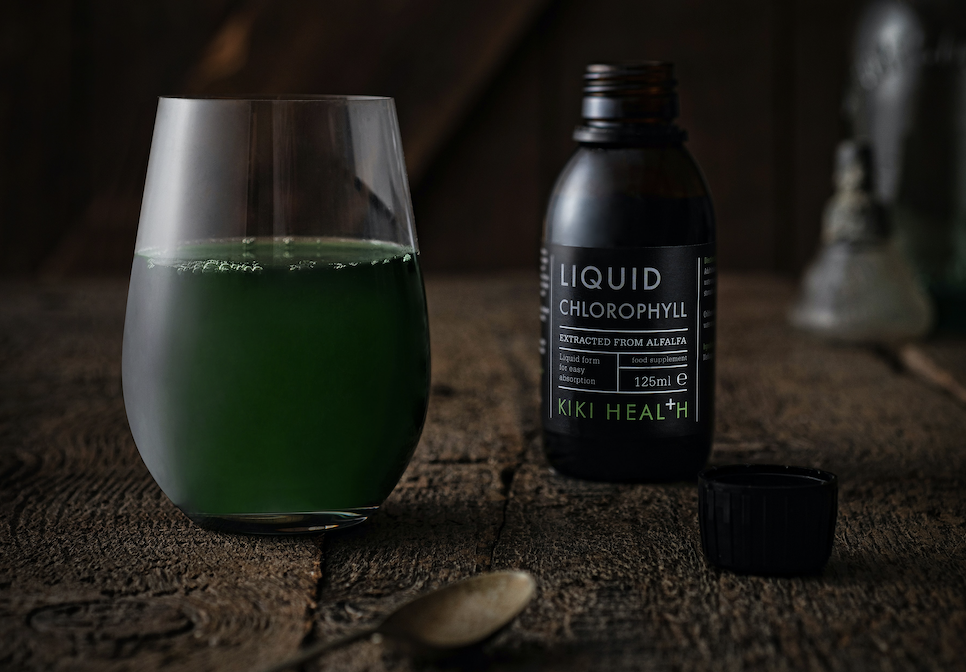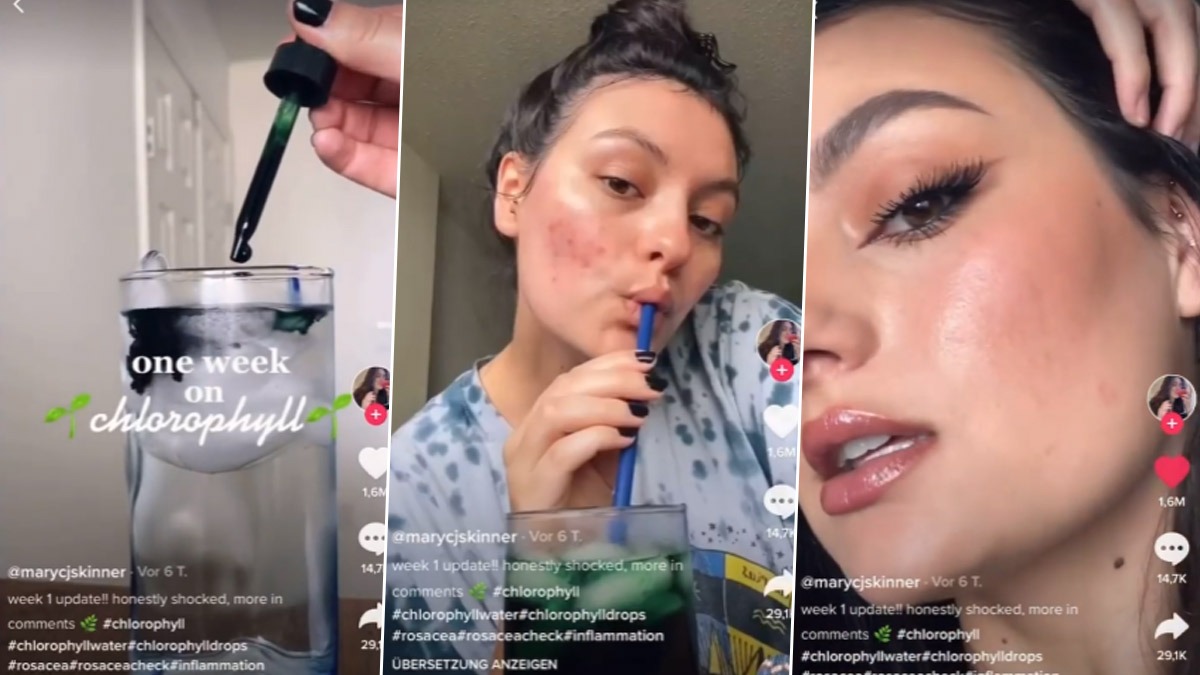Home > Healthcare >

Home > Healthcare >
Nội dung bài viết / Table of Contents
The “Chlorophyll Water” trend is taking social media by storm. Many teens and adults on TikTok, Facebook, and Instagram are swirling liquid chlorophyll into their water and showing them on camera. This dubious trend came with lots of extravagant claims —most are too good to be true— such as treating acne, preventing cancer, overall body detoxification, and energy-boosting. But, are they really capable of doing those? Scroll down to read more about chlorophyll water side effects.

Credit: Gina Sell on Unsplash
Many experts are debunking those claims since they are not backed up with valid scientific evidence and studies. To better understand why the trend is just a fad, here are some facts and myths about the infamous chlorophyll water.
Chlorophyll is a pigment found in plants, which gives vegetables such as spinach, lettuce, and cilantro their green color. In plants, they are used in a process called photosynthesis, where they convert sunlight, water, and carbon dioxide into nutrition.
However, the trendy liquid chlorophyll people are drinking is not directly made by “squeezing” leaves the way many believed it to be, since chlorophyll itself cannot dissolve in water. Instead, it is composed of chlorophyllin: a semi-synthetic chemical mixture of sodium copper salts extracted from chlorophyll.

Credit: @marycjskinner on TikTok
Short answer: no.
Chlorophyll is a necessity for plants, but by no means it is also necessary for humans to consume. However, there are countless “before and after” pictures on social media claiming that drinking liquid chlorophyll for as little as one week is able to treat acne.
According to Dr. Zain Syed, the president of the Maryland Dermatologic Society, taking chlorophyll supplements to treat acne is not recommended. He stated that although there are a few studies of chlorophyllin’s impact on acne treatment, it is not relevant for the trendy liquid chlorophyll. Those studies are experimenting on the benefits of topical formulas, and the result shows very mild improvements on acne —nothing as pictured on the social media posts. In addition to that, those topical chlorophyllins were not tested against placebo in the lab, making it very weak evidence to attest to the “instant acne-cure” claims.
A possible explanation for the “instant glow” social media posts, as stated by Dr. Syed, could be that those people are drinking more water which may contribute to their condition. “Another, much simpler explanation is that they could be covering up the acne with makeup,” Syed says. Blurring and face-altering beauty filters could also be used in the pictures, making what was shown on social media look very different from the person’s reality.
Despite how good and hopeful it sounds, unfortunately, the answer is also no.
Chlorophyll does have antioxidant and anti-inflammatory properties, just like leafy vegetables. However, there is currently not enough scientific evidence and data that can support these extravagant claims.
Even though it is declared “potentially safe” for human consumption up to three months of 300mg daily intake, chlorophyll supplements can be a double-edged sword. According to Dr. Syed, chlorophyll has photosensitive properties which allow them to absorb sunlight in plants. Meaning, some people who take chlorophyll supplements have the potential to develop severe photosensitivity. Chlorophyll water side effects can range from becoming much more likely to get a sunburn, to developing pseudoporphyria that shows up on our bodies as extreme skin fragility and blistering on the hands and feet. Chlorophyll supplements also have not been tested on humans who are pregnant, breastfeeding, and children under the age of 18.
Chlorophyll supplements are proven to contain antioxidant and anti-inflammatory properties. However, there are not enough scientific studies, data, and evidence to determine that this viral trendon social media is a cure-all (quick acne cure, cancer prevention, energy booster, etc.). Instead of taking chlorophyll supplements, experts recommend the consumption of leafy greens. They are far richer in fiber, vitamins, and minerals, and are also packed with much more antioxidants and anti-inflammatory agents than chlorophyll supplements can ever be. Not only are they much cheaper, but vegetables also do not carry the risks chlorophyll supplements are known to possess.
Chlorophyll and Chlorophyllin. Linus Pauling Institute. (2021, January 1). https://lpi.oregonstate.edu/mic/dietary-factors/phytochemicals/chlorophyll-chlorophyllin#introduction.
National Geographic Society. (2019, September 5). Photosynthesis. National Geographic Society. https://www.nationalgeographic.org/encyclopedia/photosynthesis/.
O’Connor, F. (2021, May 4). I Tried the TikTok Chlorophyll-Water Trend. The Cut. https://www.thecut.com/2021/05/tiktok-chlorophyll-water-trend.html.
Rosenbloom, C. (2021, May 4). TikTokers are drinking liquid chlorophyll. Experts debunk this wellness craze. The Washington Post. https://www.washingtonpost.com/lifestyle/wellness/chlorophyll-liquid-drops-tiktok-safe/2021/04/28/a4be904e-a79c-11eb-bca5-048b2759a489_story.html.